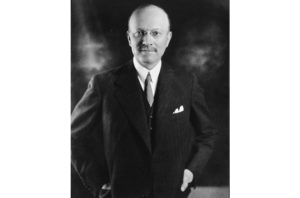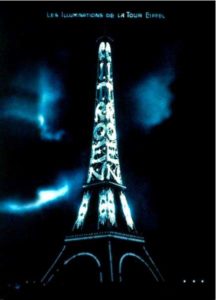André-Gustave Citroën was a visionary who always went extraordinary ways. Born in Paris in 1878, he defined several outstanding achievements until his death on July 3rd, 1935. He was the 5th and last child of Jewish parents, diamond merchant Levie Citroën from the Netherlands and Masza Amelia Kleinman from Warsaw, Poland.
The Citroën family moved to Paris from Warsaw in 1873. Upon arrival, the diaeresis was added to the name (reputedly by one of André’s teachers), changing Citroen to Citroën (a grandfather had been a greengrocer and seller of tropical fruit, and had taken the surname of Limoenman, literally “lime man,” his son however preferred Citroën, Dutch for “lemon“).
André’s father committed suicide when he was just six years old (reputedly after failure in a business adventure in a diamond mine in South Africa).
It is reputed that the young André was inspired by the works of Jules Verne and had seen the construction of the Eiffel Tower for the World Exhibition, making him want to become an engineer.
Graduating from the École Polytechnique in 1900, he visited Poland, the birthland of his mother, who had recently died. During that holiday he saw a carpenter working on a set of gears with a fish-bone structure and learned the principle of power transmission via angled gearing. These gears were less noisy and more efficient. Citroën bought the patent for very little money. Shortly thereafter, he began the production of angle-toothed and spiral-helical gears and reduction gears for automobiles in the form of double angles – or “double chevrons”, the basis on the company’s logo that still exists today.
Prior to World War 1, he formed a company responsible for the mass production of armaments. After the war, with munitions no longer in demand, Citroën turned his focus to building affordable and practical cars, proving his creativity with models like the Type A, the B 10 and the Traction Avant.
André Citroën founded the Citroën automobile company in 1919, and was the first European to produce cars on an assembly line. One of the pillars for that new process was his ability to quickly pick up and evolve technical innovations, leading it to become the fourth-largest automobile manufacturer in the world by the early 1930’s. An example of his automotive innovation: In 1925 he set up the first all-steel body production for an European car, the Citroën Type B12. The model also is the first large-scale production car with a four-wheel brake that existed previously only in expensive luxury cars. In the following years, André Citroën was responsible for introducing the development of various techniques in the automotive industry. These included the first adjustable front seats and the first stoplight – things that long since have become basic equipment of any car.
Not only was André Citroën responsible for technical innovation: but also in advertising, production and sales he was a pioneer of his time, and re-invented and re-iterated methods again, similar to what people like Steve Jobs did decades later. André Citroën was – among other things – a pioneer in advertising, financing and the development of a commercial and dealership network. Also, he was responsible for deploying a total of 150,000 traffic signs, marked with the brand Citroën. He organized mobile advertising campaigns to showcase new models and simulated accident scenarios with its vehicles, long before the term “crash test” showed up in the vocabulary of the automotive industry.
Innovative spirit from yesterday to today
Rightly therefore the company of André Citroën is perceived as the most innovative automotive brand of the 20th century.


